Remembering Yeo Bian Chuan
by Simone Lee
Qingming or Tomb-Sweeping Day is a traditional festival on the Chinese calendar in remembrance and respect of ancestors. Families visit their ancestors’ ‘home’ – the grave, for a ‘spring clean’ and replenish their needs by leaving ‘worldly’ offerings. This year, the festival fell on the 5th of April and 10 days before and 10 days after is the period where rituals are conducted.
Bukit Brown is busiest at this time of the year. Jams are not uncommon. Throngs of people drive around the historic cemetery to look for their ancestors’ tomb. They carry with them bags of offerings and cleaning tools. Yet, for another year, Yeo Bian Chuan’s grave laid forgotten.
In February 1915, during the Indian Mutiny in Singapore, Yeo Bian Chuan saved 17 Europeans’ lives by hiding them in their home from a bloody massacre. For this he was awarded a commemorative gold medal but died before receiving it.
Today, Yeo Bian Chuan’s tomb is in a state of neglect, not what a hero deserves. We can only hope that soon a descendant would identify him and restore the glory of his ‘home’, one which he deserves.
Read more on Yeo Bian Chuan’s story at Peter Pak’s blog here.
In Bukit Brown, one can find various forms of art, structure and inscriptions, auspiciously incorporated within individual tombs to enhance the happiness and prosperity of the deceased’s family.
Tomb whisperer, Raymond Goh translates a poem found on the couplets from a tomb in Bukit Brown:
金羊恆率舞
土牛畫來潮
坤輿呈秀氣
艮岫献英靈
The Golden Sheep leads the eternal dance
The Earthen Ox draws the rising tide
The earth presents the elegant vigor
The hill offers the heroic spirit
On a different tomb, Raymond translates the poem engraved on its couplets, with the help of Alex Loh and Tan Kim Hong, members of the Heritage Singapore – Bukit Brown Cemetery Facebook group:
青龍(去來)寶案
白虎會佳城
靈山鍾地脉
秀水啟人文
The green dragon forms the mountain in front of the tomb
The white tiger meets with a good water formation
The spiritual mountain concentrate the earth veins
The elegant water produces academic descendants
Do join the discussions in the Heritage Singapore – Bukit Brown Cemetery Facebook group page, a platform for all members to learn, as well as contribute and share their knowledge in all things related to heritage, habitat and history.
A photo essay by Simone Lee
“I was a little apprehensive at the beginning. Even as a Malaysian, I’ve never heard of anyone raving about a visit to Taiping. But while we were there, I fell in love…………” Simone Lee
Romancing Taiping 1 continues with part 2 as Simone Lee takes you through to sights and sounds from cemeteries – of course – to temples and museums. Hokkien Cemetery
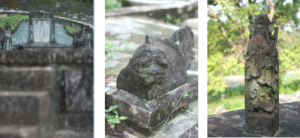
(from left to right): Stairway to Ng Boo Bee’s ‘residence’, mythical creatures, tomb guardian (photo collage Simone Lee)
The most valuable tomb in Taiping belongs to Ng Boo Bee. Penniless when he left China, he became the wealthiest man in Taiping from running tin mines, opium farms and construction. He was the first contractor to the British, building the first railway line in Malaya running from Taiping to Port Weld. He made many contributions to society during his lifetime. He built schools in Perak and China, public fountains, shophouses, donated land to the Hokkien Association and more. In fact, he built half of Taiping and owned many properties and plantations in both Perak and Penang. At death, his wake lasted for about 2 months to allow time for his friends to travel, some from as far as England. The entire town of Taiping shut down to join the procession, which took 4 hours to pass his house. Today, he rests on a 3-level tomb accompanied by guardian generals, lions and other mythical creatures, which showcase his wealth and influence while he was alive.
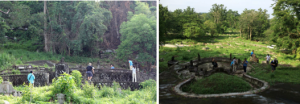
– (Left) As you walk up the hill towards Ng Boo Bee’s majestic tomb, you’ll see the 3-levels of the stone platform, which looks like a fort (photo by Bianca Polak) – (Right) The View from the back of Ng Boo Bee’s tomb (photo by Raymond Goh)
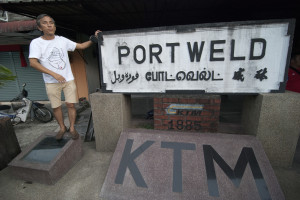
Our guide Ah Kew explains Ng Boo Bee built the first railway in Malaya for the British at Port Weld (photo Simone Lee)
Kwantung Cemetery Kwangtung Cemetery contains burials mostly of Cantonese and Hakka residence.
Taiping War Cemetery The fallen soldiers who defended Malaya from the invading Japanese forces were interred in this cemetery. There are 3 sections of the cemetery; the Christians (on one side of the road), the Muslims and Indians (on the other side of the road).

(from left to right): A tombstone for an Indian soldier, view of Christian side of the War Cemetery, and a tombstone for an English soldier (photo Simone Lee)
Amongst over 850 tombs are tombs of 4 volunteer soldiers. Three of them, Lim Poh Ann, Tang Bee Choon and Ong Kim Sai, were sent to fight in Singapore where they died. After the war, their bodies were returned and given a soldier’s burial.
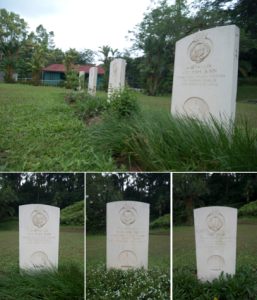
– (Top row) The 4 fallen soldiers who volunteered to defend our land. – (Bottom row) Lim Poh Ann, Ong Kim Sai and Tang Bee Choon were sent to Singapore, where they were killed in action (photo Simone Lee)
As more immigrants were brought in to work in the booming new town, many temples were built. A temple which has stood the test of time is the Sam Wong Yah temple. The temple was built by Loke Yew, a millionaire and philanthropist who came to Singapore to seek his fortune. He started work at a provision shop at Market Street until he saved enough to open one of his own. He then travelled to Taiping to explore the tin mining businesses. However, he did not do well and was soon broke. He sought shelter at the hut housing the Sam Wong Yah deities. One night, in a form of a white figure, he dreamt of the deities advising him to go further south to strike it rich. And strike it rich, he did. He returned to Taiping to build the temple around the hut where he had taken shelter.
In Singapore, a road was named after him (Jalan Loke Yew, opposite of the Peranakan Museum at Armenian Street) in honour of his contributions while the Cathay Gallery at The Cathay (founded by Loke Yew) showcases the history of the building and the Loke family.
Matang Museum aka Ngah Ibrahim Mansion Ngah Ibrahim succeeded his father, Long Jaafar as the Malay chieftain of Larut. He fortified his mansion by building thick brick walls around it, resisting the violence between the Ghee Hin and Hai San fights. Part of the wall was damaged by a Japanese war plane which crashed into it. In the mansion are stories and artifacts belonging to Ngah Ibrahim and showcased what the mansion was used as after Ngah Ibrahim was exiled in Seychelles. He was never allowed to return and died in Singapore (1887). In 2006, his remains were exhumed from Masjid Al-junied and reinterred in the compound of his grand old mansion which now is the Matang Museum.
Other Attractions
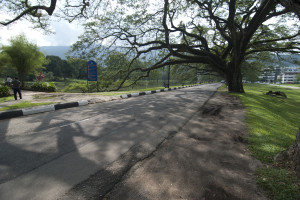
Taiping Lake Gardens, originally a mining ground, is the first public garden in Malaya since it’s conversion in 1880. The beautiful 120 year old rain trees line the road around the lake have been a hot subject as nature lovers fight to save them from urban threats. (photo Simone Lee)
Upon our return in Singapore, a fellow member of the Heritage Singapore – Bukit Brown group asked, “did you guys do anything else in Taiping but eat?”, questioning the amount of food postings (and food) we had on the our Facebook pages. We certainly did and visited many more places apart from the ones featured in this write-up but there is simply too much to write in just one post. Besides, the best way to learn more about a place is to be there in person. There are many more that we didn’t get to explore. We certainly fell-love with Taiping’s charm and hope to go back in the near future. If you do plan to visit Taiping, do contact Lee Ah Kew through http://ahkew.blogkaki.net Ah Kew is a freelance writer and field historian, whose knowledge and collection of folk stories would enhance your experience at Taiping. Ah Kew’s article on the Brownies 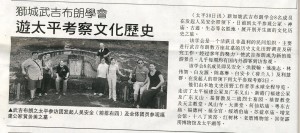
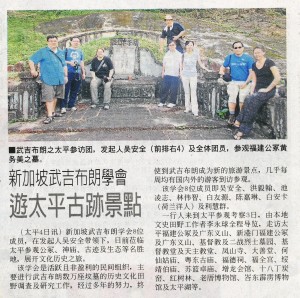
***********************
Editor’s note: If you have enjoyed Simone’s blog post and photo essay, do leave a comment and encourage her to do more. She is the “official” brownie travel concierge
武吉布朗展览系列华语讲座
2014年9月20日(星期六)
地点:新加坡国家图书馆5楼,Possibility Room
2-3pm坟墓建筑(主讲者:赖启健博士)
3-4pm 说书的石头—武吉布朗坟场坟墓石雕中的故事(主讲者:洪毅瀚先生)
4-5pm 记录武吉布朗:地图与制图(主讲人:莫缕勇先生)
如欲出席讲座,请在下列网站登记:
http://www.eventbrite.com/e/bukit-brown-exhibition-public-talks-mandarin-tickets-12507206391
坟墓建筑
主讲者:赖启健博士
武吉布朗坟场的坟墓建筑是它独特物质文化的一部分,为新加坡和本区域以及中国南方之间在社会、文化和经济上的联系提供不少重要的资料。讲座将探讨武吉布朗坟墓建筑的记录和这项工作的重要性。主讲者也将利用纸模型让出席讲座的孩童对 坟墓健 筑有更深一层的认识。
赖启健博士,新加坡注册建筑师,新加坡国立大学建筑系硕士(1996),美国加州大学柏克莱建筑与都市设计系博士(2005)。他的研究领域为东南亚艺术、建筑、聚落、都市化和景观的历史。
说书的石头—武吉布朗坟场坟墓石雕中的故事
主讲者:洪毅瀚先生
武吉布朗坟场的坟墓石雕数量庞大、题材丰富,堪称海外华人坟场中的石雕大观园,早年精湛的手工石雕艺术作品随处可见。坟场内许多雕刻精美的石质坟墓构建丝毫不受岁月的洗礼损坏,让百年后的游人有机会一睹它们的风采。无论是江山美人、择贤用才、事亲尽孝或是神话志怪,流传千百年的民间故事和历史典故在石匠的巧手下生动地呈现。
这次讲座将通过大量的图片介绍石雕中的故事题材。
洪毅瀚,工程师,工余参与武吉布朗坟场导览活动和历史文化项目研究,曾在bukitbrown.com网站发表关于武吉布朗坟场坟墓装饰题材的博文。
记录武吉布朗:地图与制图
主讲人:莫缕勇先生
在记录武吉布朗文史的过程中,工作团队搜集到了不少非常珍贵和罕见的历史地图和空中照片。主讲人莫缕勇先生将在讲座中呈现这些历史地图和空中照片。同时也会分享一些地图和空中照片中有趣的细节。在另外一方面,由于坟场受到开路工程的影响,约有4000座坟墓需迁移。为了记录这些坟墓的确切位置,有关当局测量了每一座坟墓的地理坐标。主讲人也会讲解这一测量和绘制坟场地图的过程和结果。
莫缕勇是武吉布朗文史记录工作小组和工作委员会的成员。目前从事地理资讯系统(GIS)的咨询工作,也是地图发烧友及研究者。在武吉布朗文史记录团队里负责研究历史地图与处理地理资讯和绘制地图的工作。曾在新加坡制图单位任职和国家挡案馆工作,是伦敦皇家地理学会会士。
Public Talks in association with the Bukit Brown Exhibition (In Mandarin)
Saturday, 20 September 2014
2-3pm
Speaker: Dr Lai Chee Kien
Title: Tomb Architecture
3-4pm
Speaker: Ang Yik Han
Title: Story Telling Stones – Tales from the Stone Carvings of Bukit Brown Cemetery
4-5pm
Speaker: Mok Ly Yng
Title: Documenting Bukit Brown: Maps and Mapping
Please register your attendance at the following website if you are interested to attend these Mandarin talks:
http://www.eventbrite.com/e/bukit-brown-exhibition-public-talks-mandarin-tickets-12507206391
Tomb architecture
The material culture at Bukit Brown cemetery, including tomb architecture, is unique and offer many insights on Singapore’s social, cultural and economic connections to the region and to Southern China and Singapore. This talk discusses the documentation of tomb architecture at Bukit Brown and the importance of such records. There are also opportunities for children at this talk to learn about tomb architecture using paper models.
Dr Lai Chee Kien is a registered architect, and graduated from the National University of Singapore with an M Arch. by research [1996], and then a PhD in History of Architecture & Urban Design from the University of California, Berkeley [2005]. He researches on histories of art, architecture, settlements, urbanism and landscapes in Southeast Asia.
*******
Story Telling Stones – Tales from the Stone Carvings of Bukit Brown Cemetery
The large number and varied themes of stone carvings in Bukit Brown veritably make it a museum of stone carvings where masterpieces of the past can be encountered at every turn. Many of the intricately carved stone structures in the cemetery are untouched by the ravages of time, and visitors can still see them in their full glory a century after they were created. Be it themes of heroes and beauties, appointing wise officials, filial piety or the supernatural, folktales and historical stories which have been passed down for centuries come to life in the hands of skilled craftsmen. During this talk, numerous pictures will be used to introduce the themes found in the stone carving stories.
Ang Yik Han is an engineer by profession. He is involved in conducting tours in Bukit Brown Cemetery and historical and cultural research. His posts on the decorative motifs of tombs in Bukit Brown Cemetery have appeared on the All Things Bukit Brown website (bukitbrown.com).
*******
Documenting Bukit Brown: maps and mapping
This talk showcases the various historical maps and air photos which were collected during the Bukit Brown Cemetery Documentation Project. Interesting details from these maps and air photos will be highlighted. The process of surveying and mapping the affected graves as part of the documentation will also be covered. The potential uses of these maps and surveyed data will be briefly touched on.
Mok Ly Yng is a member of the Bukit Brown Cemetery Documentation Project team and the Working Committee. He researched and sourced for the historical and current maps of the Bukit Brown area for the project. He had worked in Mapping Unit and the National Archives of Singapore. He is a Fellow of the Royal Geographical Society of London. He researches the history of surveys and mapping of Singapore as a hobby.
A postscript : Saturday 2 nd August, descendants are brought to visit the cluster of tombs belonging to Chua Kim Teng, Seow Geok Luan and Chua Eng Cheong by Raymond Goh
“Touching and joyous moments as descendants of Chua Kim Teng’s family pay respects to their ancestors for the first time. Even the ground was pulsating with energy as my compass luopan went haywire” Raymond Goh.
***
Today’s Chinese newspaper Zaobao, reported on a significant find of Lee Kuan Yew’s maternal ancestry in the depths of the forest of Bukit Brown. It is the find of the year (2014) for Bukit Brown researchers and bloggers Raymond Goh and Walter Lim.
Please click on image to enlarge
“The 4 related tombs ranging from 70 to 127 years in Bukit Brown and Greater Bukit Brown (Lao Sua) has been rediscovered by local historical researchers and are valuable resources for the study of our founding Prime Minister Lee Kuan Yew’s maternal grandfather, Chua Kim Teng family history “
The find was discovered on 1 st July. From photos sent to Raymond by a tomb keeper in the area, Raymond subsequently on the same day, verified it on site as belonging to Lee Kuan Yew’s family. The find was kept under wraps to allow Zaobao correspondent Chia Yen Yen, time to conduct further research with family members of Lee Kuan Yew, specifically his brother, Dr Lee Suan Yew contributed this family photo to the article.
The 4 tombs were identified as belonging to Chua Kim Teng and his two wives Seow Geok Luan and Leong Ah Soon, and Lee Kuan Yew’s maternal great grandfather Chua Eng Cheong. They are from Lee Kuan Yew’s mother side ie Mrs Lee Chin Koon nee Chua Jim Neo. Leong Ah Soon’s grave is situated in Bukit Brown Cemetery, the other three are situated close together in a family cluster in Lao Sua Hokkien Cemetery which is located in the hill known as Bukit Brown in old maps. Lau Sua Hokkien Cemetery is adjacent to Bukit Brown Cemetery.
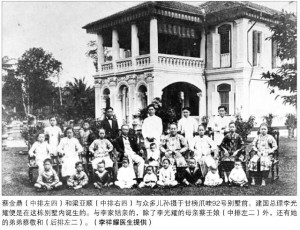
Chua Kim Teng (LKY’s maternal grandfather – centre row, 4th from left), Leong Ah Soon (centre row, 4th from right) Lee Kuan Yew’s mother Chua Jim Neo (centre row, 2nd from left) and her brother Chua Kheng Hoe (last row, second from left) was also related by marriage to Lee family (Family Photo from Lee Suan Yew)
This extended family portrait was taken at 92 Kg Java Rd bungalow where Lee Kuan Yew was born.
Additional info on the house: The Cheng Kee Hean Association celebrated its silver jubilee in June 1918 with the taking of group photograph and a thanksgiving ceremony at the house of Mr Chua Kim Teng (vice-president) in Kampong Java Road.
The link to the FB posting by Raymond Goh when he first identified the tombs here (only accessible if you have a facebook account)
“The inscriptions also attest to the rich burial Chinese culture and customs being practiced in Bukit Brown cemetery. As the dragon dance and flag beats, the gates of Heaven are opened (Chua Eng Cheong’s tomb inscriptions)” Raymond Goh
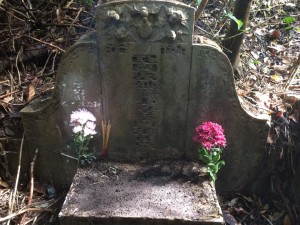
Mdm Seow Geok Luan’s tomb (Chua Kim Teng”s wife), with tomb design 五蝠 (福) 捧壽 five bats (homophonic with fortune) encircling longevity (photo Raymond Goh)
****
Translation of Zaobao Article
The tombs of Chua Ying Chiang and son Chua Kim Teng were rediscovered by local history researchers, Raymond Goh and Walter Lim. Although they have seen the tombs before, it left no earlier impression on them until a news report about the rickshaw puller who saved Lee Kuan Yew’s life emerged recently. Raymond then remembered, Lee Kuan Yew had mentioned his maternal grandfather Chua Kim Teng and grandmother Leong Ah Soon in his memoirs. Coincidently at the same time, Soh Ah Beng, a tomb keeper had used his mobile phone to take a photo of the tombstone and forwarded it to Raymond who later confirmed that the tombs belong to the ancestors of the Chua family.
Zaobao correspondent, Chia Yen Yen together with Raymond Goh and Walther Lim specially made a trip to the deep forested area of Bukit Brown known as “Lau San”, meaning old hill to substantiate the find. They also discovered the tomb of Chua Kim Teng’s second wife, Seow Geok Luan next to Chua Ying Chiang (Chua KimTeng’s father). However, the tomb of Lee Kuan Yew’s maternal grandmother, Leong Ah Soon was missing. On conducting further research and the Bukit Brown’s burial register, they finally located the tomb of Leong Ah Soon.
Two descendants of the Chua family, retired accountants, Seet Keong Fatt and Seet Keong Hoe, told Zaobao, that every year during “Ching Ming”, they would visit their maternal grandmother, Leong Ah Soon’s grave to pay their respects. However, they were no longer aware of the whereabouts of their maternal grandfather and great grandfathers’ graves. The mother of the two Seet brothers, Chua Swee Neo is the the youngest daughter of Chua Kim Teng and Leong Ah Soon. Chua Swee Neo is also the younger sister of Chua Jim Neo (Lee Kuan Yew’s mother). She had married Seet Cheng Kang in a traditional Chinese wedding ceremony in 1937 and their wedding was reported in the press.
Based on the “Memoirs of Lee Kuan Yew”, for a married daughter’s family to live with the in-laws (as was the case for Lee Chin Koon and Chua Jim Neo living with the Chuas) was not accepted in a traditional Chinese family. But to a Chinese Peranakan family from Malacca it was common.
Although Chua Kim Teng was born in Singapore, his father Chua Ying Chiang came from a typical Peranakan family in Malacca. Chua Ying Chiang’s tomb at the 127 year old “Lau San” of Bukit Brown is very large, estimated to be 40 feet in length and 24 feet in width, reflecting on his illustrious life. However, it is a pity that what information about his life that can be found today is limited.
Chua Kim Teng’s second wife, Seow Geok Luan’s tomb is next to Chua Ying Chiang, and much smaller.
According to the old map, the 3 tombs are at the “Lau San” of Bukit Brown.
The inscription on Chua Ying Chiang’s tombstone recorded his death date as April 1887. On the tombstone are carvings of dragons, unicorns, cranes and deer. This reveals the beliefs and importance placed on the “dragons’ veins” and “fengshui” meaning posterity and prosperity.
The other couplets are “龙挺旗鼓天门开、虎拒艮宫地户闭and “排衙之砂真有情、癸向艮流富贵龙” which translates to : “As the dragon dance, and the flags beat, the gates of heaven are open. The surrounding terrain gives support, and prosperous and illustrious the dragon becomes”
The names of Chua Ying Chiang’s son, Chua Kim Teng and daughters: Beow Neo, Tam Neo and Cheng Neo are inscribed on the tombstone. However, based on family tree records, the names of the other two sons, Kim Tiong and Kim Tye are missing from the tombstone.
Chua Kim Teng (1865-1944) outlived his 3 wives. On his tombstone are names of 6 sons and 8 daughters. However, the name of his adopted son, Keng Seng (adopted by wife Leong Ah Soon) was omitted. His other 2 daughters, namely Sim Neo and Siew Neo were also omitted. There is a possibility that that the names of his descendants were copied from the tombstone of his second wife, Seow Geok Luan which explains why the 2 youngest daughters’ names were omitted.
According to Dr Lee Suan Yew, both his paternal grandfather, Lee Yun Long and his maternal grandfather, Chua Kim Teng died during the Japanese Occupation. He was 11 years old when his maternal grandfather passed away and he still remembers his mother Chua Jim Neo making arrangements for his grandfather’s funeral and burial.
Chua Kim Teng was born in 1865 and died in 1944 . As recorded on his tombstone, his ancestors are from Fujian, Zhangzhou, Haicheng, Zhen village (福建漳州海澄陈莊).
Dr Lee Suan Yew has the impression that his maternal grandfather was wealthy, lived in a big house, was generous and often gave his grandchildren money to buy preserved olives, sour plums and other snacks. He said that his brother Lee Kuan Yew was born in his maternal grandfather’s 2-storey bungalow at No. 92 Kampong Java. He has an old photo of the family, including his mother, maternal grandfather and grandmother, aunties and uncles, taken in front of the big bungalow.
The Chua family later moved to another big house at Lorong L, Telok Kurau. Based on a “For Rent” advertisement in the Straits Times dated 28 July 1928, the bungalow at Kampong Java had water and gas supply, telephones lines, a garage and a tennis court. It was a magnificent bungalow.
Dr Lee said that his maternal grandfather had three wives. First wife, Seow Chue Luan and second wife, Seow Geok Luan are sisters. His maternal grandfather had one son and 3 daughters with his first wife and 2 sons and 3 daughters with his second wife. He had 3 sons and 4 daughters with his third wife.
Based on records in the “Memoirs of Lee Kuan Yew”, Leong Ah Soon was a Hakka woman from Indonesia. She was a young widow with 2 young children. Lee Kuan Yew’s mother, Chua Jim Neo is the eldest daughter of Chua Kim Teng and Leong Ah Soon.
According to Dr Lee, besides the Kampong Java and Telok Kurau bungalows, his maternal grandfather owns several properties at Claymore Road. The properties were subsequently sold due to the Great Depression.
Based on old newspaper records, Chua KimTeng was the owner of a market at East Coast. Lee Kuan Yew in his memoirs mentioned that his maternal grandfather owned a large rubber plantation and the family sometimes took the bullock cart to the plantation for vacations.
Although Chua Kim Teng was a successful businessman, he was only actively involved in the mutual aid organisation Cheng Kee Hean Association which was founded in 1893. In November 1921, on the 25th anniversary of the association, a celebration dinner was held at the Kampong Java bungalow. Chua was then the Vice President of the association.
The tombstone of Lee Kuan Yew’s maternal grandmother, Leong Ah Soon is on a hillside of the Bukit Brown cemetery. Although the tombstone is not considered big, neither can it be considered small and is well kept. According to records in “Memoirs of Lee Kuan Yew”, Leong Ah Soon had 9 children. However, on her tombstone inscribed were the names of 7 sons and 10 daughters, a total of 17 children. There were also names of 7 grandsons and 6 granddaughters.
According to Dr Lee Suan Yew, the name of Leong Ah Soon’s adopted son, Chua Keng Seng (formerly Tan Keng Seng – son of sworn sister) was also inscribed on the tombstone. Leong Ah Soon’s daughter, Watt Neo is from her previous marriage. The names of Leong Ah Soon’s sons and daughters which were inscribed on her tombstone include the children of Chua Kim Teng’s first and second wives.
It is interesting to note that the couplet “源前皆赤子,益上是青天” on the tombstone has been amended and it differs from the original couplet “眼前皆赤子、头上是青天” which refers to court officials who are impartial. Does it imply that she treated all her children equally? Another couplet reads“自得山中趣,谁论世上名”. It literally translates to “when you know the pleasures of the hills , who cares about fame in one’s lifetime”.
Not only did Leong Ah Soon marry her daughter, Chua Jim Neo to Lee Kuan Yew’s father, Lee Chin Koon, she also took Lee Chin Koon’s sister, Lee Kim Neo as the bride for her eldest son Chua Keng Hoe.
Lee Kuan Yew, in his memoirs, said that his maternal grandmother had a different view on his education. His maternal grandmother had insisted on sending the young Lee Kuan Yew who was barely 6 years old to a private class in an attap house to learn and recite the Chinese Classics. When he complained to his mother about the difficulties he had learning Chinese, his mother pleaded with his maternal grandmother on his behalf to let him discontinue Chinese lessons. However, his maternal grandmother insisted that he learned some Chinese and transferred him to a private school in Joo Chiat. The school was impressive with 10 classrooms and had between 35 to 40 students per class. The young Lee Kuan Yew still had difficulties learning Chinese. Three months later, Lee Kuan Yew’s mother again pleaded with his maternal grandmother who finally agreed to let him transfer to an English school.
Based on records on Leong Ah Soon’s tombstone, she died on October 9, 1934. She was born in 1881 and was 16 years younger than her husband, Chua Kim Teng.
Based on archival records, Leong Ah Soon had on the eve of World War I, in 1916, with the joint effort of women in Malaya purchased fighter jets as gifts for the British government. She had donated ten dollars.
(Thanks to Elaine Tan for the translation with inputs from Raymond Goh)
李光耀外家先人四古墓密林中寻获
谢燕燕
2014年07月29日
苏亚明、吴安全和李志强(左至右)摄于建国总理李光耀曾外祖父蔡应昌的墓前,这个藏在深山老林的古墓已有127年历史。(严宣融摄)
新恒山亭与武吉布朗四座有70年至127年历史的老墓,最近被本地文史工作者重新发现,成了研究建国总理李光耀外祖父蔡金鼎家族的重要史料。
李光耀的曾外祖父蔡应昌、外祖父蔡金鼎和蔡金鼎第二任妻子萧玉銮的墓,多年来深藏在新恒山亭的深山老林里。蔡金鼎的第三任妻子,也是李光耀的亲外祖母梁亚顺则葬在武吉布朗坟场内。
这四座能为蔡家的家族史提供珍贵史料的老墓,是在本报于6月29日刊登了李光耀与人力车夫高长古的故事后,被本地著名寻墓人吴安全和文史工作者林志强找到的。
谢燕燕 报道
chiayy@sph.com.sg
蔡应昌、蔡金鼎父子的墓,吴安全其实过去见过,但没多加留意,也不清楚墓主人身份,直到阅读了本报《寻找人力车夫高长古》一文,才想起建国总理李光耀在回忆录中提到的外公蔡金鼎和外婆梁亚顺。
更巧的是,他的朋友苏亚明(51岁)正好在那个时候用手机,把蔡应昌墓和蔡金鼎墓的照片传给他,马上引起了他的兴趣。专门帮人打理墓园的苏亚明,从小在陈 牛廊(武吉布朗昔日村子)长大,对新恒山亭和武吉布朗了如指掌。他认识吴安全后,每次发现大型古墓,就会拍照传给吴安全看。
古墓藏在密林里
本月中的一个早上,本报记者随吴安全、苏亚明和林志强走入被喻为“老山”的新恒山亭后,发现蔡应昌、蔡金鼎和萧玉銮的墓确实藏在人迹罕到的密林里,蔡家后人恐怕早已找不到那里。苏亚明是因为经常在山里走动,加上他曾祖父的墓刚好与蔡金鼎墓为邻,才会发现这一组古墓。
吴安全、林志强找到蔡家三位先人的墓后,发现李光耀外婆梁亚顺的墓不在其中,于是翻查旧档案,通过下葬记录册找到她位于武吉布朗的墓。
本报后来走访李光耀的弟弟李祥耀医生,从李医生那里拿到蔡家后人所整理的一份简单家谱,再把这家谱与墓碑上的名字对比,理出了一个头绪来。
蔡家另外两位后人,退休会计师薛强发和薛强和告诉本报,他们每年清明都会到外祖母梁亚顺的墓拜祭,但早已不清楚外祖父和曾外祖父的墓在哪里。如今被重新发现,他们将找时间到坟前祭拜。
这两兄弟的母亲蔡修娘是蔡金鼎与梁亚顺所生的最小女儿,即李光耀母亲蔡壬娘(又作任娘,过去译成认娘)的妹妹。蔡修娘是在1937年与薛清江举行华人婚礼,当时还上报。
李光耀曾外祖父百年古墓极大
《李光耀回忆录》中说,在传统华裔家庭里,结了婚的女儿与丈夫、孩子若住在外家,通常不为社会所容,但对来自马六甲的土生华人家庭来说,这却是常有之事。
能找到的资料很有限
蔡金鼎虽是在新加坡出世,他父亲蔡应昌却是来自马六甲的土生华人,他们可说是典型的峇峇家庭。蔡应昌位于新恒山亭的127年古墓非常大,估计长40英尺,宽24英尺,显示他生前显赫,只可惜今天能找到的资料很有限。
蔡金鼎和第二任妻子萧玉銮的墓就在蔡应昌墓旁边,但规模小得多。
根据旧地图,这三座墓所处的位置就在原来的布朗山。
蔡应昌墓碑上记录着他是在“光绪丁亥年岁次梅月吉旦”即1887年4月去世,碑上面有朱雀浮雕,墓肩有龙的雕刻,供桌下有麒麟、仙鹤和鹿的图案。
墓前对联则显示这是很讲究龙脉与风水的古墓。里头的对联写着“龙挺旗鼓天门开、虎拒艮宫地户闭”,外面的对联是“排衙之砂真有情、癸向艮流富贵龙”。
蔡应昌的墓碑上刻着孝男金鼎和孝女妙娘、淡娘和贞娘,不过蔡家后人所整理的家谱则显示他还有另外两名儿子蔡金忠和蔡金泰。他们的名字为何不在墓碑上则不得而知。
比三名妻子长寿的蔡金鼎(1865-1944),墓碑上刻着六男八女的名字,当中少了梁亚顺所领养的敬成,却不清楚为何还少了两名小女儿心娘与修娘的名字。一个可能性是刻碑文时“抄袭”萧玉銮的碑文,以致漏掉两名小女儿。
萧玉銮是在中国刚“变天”,辛亥革命推翻满清王朝之际离开人世的。她逝于“辛亥十月十六日旦”(1911年12月6日),孙中山当时正从美国回返中国途中,所搭乘游轮一个多星期后抵达新加坡,他还在陈武烈位于花芭山腰的金钟别墅住了一晚。
中国是在1912年1月1日才改年号为民国元年,但萧玉銮的墓已率先启用民国年号,只不过当时情况有点混乱,把国号、年号颠倒用,以致出现“中华辛亥十月十六日旦”和“民国故妣谥玉銮萧氏墓”。
李光耀在外公别墅出世
李祥耀医生说,他祖父李云龙和外公蔡金鼎都是在日本占领新加坡期间离开人世。外公去世时他11岁,至今还记得母亲蔡壬娘操办丧礼的情景。
生于1865年,卒于1944年的蔡金鼎,墓碑上的祖籍是福建漳州海澄陈莊。
在李祥耀印象里,外公相当有钱,住在很大的房子里,为人很慷慨,经常给孙子们钱去买橄榄、酸梅等零食。
洋房很有气派
他说,大哥李光耀是在外公位于甘榜爪哇92号的两层楼别墅出世的,他至今还有一张旧照片,是他外公、外婆、母亲、众多阿姨和舅舅们在那栋大房子前拍摄的全家福。
蔡家后来搬到直落古楼罗弄L的另一栋大房子。根据1928年7月27日刊登在《海峡时报》的一则出租广告,甘榜爪哇的别墅有煤气、水、电话、车库和网球场,是很有气派的洋房。
李医生说,外公娶过三名妻室,第一任妻子萧翠銮和第二任妻子萧玉銮是姐妹,他和萧翠銮生了一男三女,和萧玉銮育有二男三女,和第三任妻子梁亚顺生了三男四女。
根据《李光耀回忆录》的记载,梁亚顺是来自印度尼西亚坤甸的客家妇女,嫁给蔡金鼎之前是育有两名年幼孩子的年轻寡妇。李光耀的母亲蔡壬娘是她与蔡金鼎所生的长女。
李医生说,外公除了拥有甘榜爪哇和直落古楼的洋房,还曾买下克雷摩路(Claymore Road)的好多栋房子,但后来受到经济大萧条影响而将之变卖。
林志强找到的旧报章资料显示,蔡金鼎曾是东海岸巴刹的业主,李光耀在回忆录中则曾提到外公在菜市拥有大片树胶园,他们家有时会坐牛车到园丘度假。
蔡金鼎虽是成功商人,但从旧档案看,他只活跃于1893年创立的互助组织正气轩(Cheng Kee Hean Association)。1921年11月,这个组织庆祝25周年时,曾在蔡金鼎上述甘榜爪哇别墅举行盛大庆祝会,他当时任正气轩副会长。
外婆梁亚顺坚持
要李光耀读中文
李光耀外婆梁亚顺的墓,坐落武吉布朗半山腰,不是很大,却也不小,维持得相当好。根据《李光耀回忆录》,梁亚顺生过9名儿女,但墓碑上却刻着7名孝男和10名孝女,共17名儿女的名字!另外还有7名内孙和6名内孙女。
李祥耀医生说,外婆墓碑上的一名儿子蔡敬生其实是她结拜姐妹的儿子,本姓陈,后来被外婆领养。另一名女儿发娘(也有写成活娘)则是梁亚顺与前夫所生女儿。梁亚顺墓碑上的众多儿女,包括蔡金鼎与两位萧氏所生儿女。
最有意思的是墓前的对联,把原本指为官清廉的“眼前皆赤子、头上是青天”改成“源前皆赤子,益上是青天”。这是否在比喻她公平对待众多儿女,把他们视为“赤子”?另一对联是“自得山中趣,谁论世上名”。
梁亚顺与蔡金鼎除了把女儿蔡壬娘许配给李光耀的父亲李进坤外,还让两人所生的大儿子蔡敬和迎娶李进坤的妹妹李金娘。
李光耀在回忆录中说,这位外祖母对他的教育很有一套看法,还不满6岁便坚持把他送到设在亚答木屋内的私塾,老师每天让孩子背诵古书。
他向母亲诉苦后,母亲代他向外婆说情,但外婆坚持他一定要读些中文书,于是送他到如切台浚源学校。这学校设施像样多了,有10间课室,每班35至40名学生,但年幼的李光耀还是觉得华文难学。两三个月后他再向母亲恳求,这一次外祖母终于答应让他转到英校。
根据坟墓上的记录,李光耀这位坚持要他读点中文的外婆是在民国二十三年九月初二,即1934年10月9日与世长辞。她生于1881年,比蔡金鼎小了16岁。
从旧档案中还知道梁亚顺曾于1916年,即第一次世界大战前夕,联合其他马来亚妇女购买战机送给英国政府,她当时捐了10元。
本报后来走访李光耀的弟弟李祥耀医生,从李医生那里拿到蔡家后人所整理的一份简单家谱,再把这家谱与墓碑上的名字对比,理出了一个头绪来。
新加坡报业控股版权所有(公司登记号:198402868E)
by Norman Cho
In 2011, I discovered the grave of my paternal grandfather, Cho Kim Leong at Bukit Brown Cemetery. Since then, I have been trying to locate the tomb of his father, Cho Boon Poo (Cho Poo), who was laid to rest in Malacca. I had absolutely no clue as to which cemetery he was buried. Bukit Cina and Jelutong cemeteries came to mind but these are huge cemeteries with more than a hundred thousand graves each. They are maintained by the Cheng Hoon Teng Temple but pre-war records are unavailable. It seemed that I had hit a dead-end!
However, miracles do happen. To me, these are little blessings from above. Perhaps, the old man had wanted his descendants to visit him and had influenced how things turned out. It must have been decades since the last time any descendants paid their respects at his tomb. He must have known my sincerity and had helped me along without my knowledge. The breakthrough came in April 2014. A relative whom I had never known, contacted me via Facebook to introduce himself as the maternal great-grandson of Cho Poo, after he had discovered that we have matching ancestors from an online Family Tree software on the internet. 70 year old Vincent Lee was descended from Cho Poo’s eldest son, Cho Kim Choon, while my paternal grandfather, Cho Kim Leong, was the third son. He resides in Australia and was planning a trip down to Singapore in April 2014. He requested my assistance to put him in touch with the relatives in Singapore.
It turned out to be a blessing for me! I talked to my eldest aunt, Rose Cho (88 years old), to ask for the contacts of other relatives from the Cho clan. That was how I found aunt Elizabeth Cho (62 years old), who was the only child from the fifth son, Cho Kim Hock, a famed state badminton player for Malacca in the 1930s. We organised a dinner for our overseas relative and his wife. During dinner, I had a nice chat with Elizabeth – whom the family affectionately calls Bert – about Cho Poo. She told me that her only visit to his grave was when she was a child of 9 years old. That was more than 50 years ago! Her father who was the only surviving son at that time dreamt of his father asking him why he had not visited him in such a long time. Heeding the call, he brought his wife and daughter to pay their respects to his father. Since then, he had visited the grave alone every year till several years before his death in 1990.
Aunt Elizabeth, had the memory of an elephant! She vividly recalled that the cemetery was about a 40-minutes-drive from the Malacca Town, but had no inkling about the name of the cemetery. She further described that the cemetery was sliced into two by the main road, there was a cemetery on the left and another on the right, and Cho Poo’s was on the right. The tomb was relatively large and on a gentle-sloping plain. It faced a vast and beautiful paddy field. She added that the cemetery was on the land which once belonged to Cho Poo and was probably the private burial ground of the Cho family. Later, when the family was not doing well financially, it was sold to the Malacca’s Eng Choon Hway Kwan and it became a cemetery for the Eng Choon community. She thinks that the tomb should still be there, given the leisurely pace of development in Malaysia. She asked if I would be able to find the tomb. I told her that I could try. All her clues were useful, except for the paddy field. I told her that I doubt the paddy field in her memory still exists. Nevertheless, I took whatever clues that I could use and converted them into intelligent information.
Firstly, I eliminated Bukit Cina as it was near Malacca Town and therefore could not be a 40-minutes-drive. Next, I looked at the map of Jelutong cemetery but it was not sliced into two by any road. I asked a few Malaccan friends of other lesser-known cemeteries and searched the Google Map for them. Finally, I found a relatively small cemetery, probably no larger than 20 acres, which was dissected by a main road. It was away from the Malacca Town and would probably take about 30 minutes to get there by car. This was the Krubong Cemetery. To be certain that I had located the correct cemetery, I contacted a Malaccan friend who verified that this cemetery is indeed managed and owned by the Eng Choon Hway Kwan. He helped me to obtain the mobile contact of the tomb-keeper to locate the grave. With modern technology, I communicated with the tomb-keeper via Whatsapp to economize on the phone bill. Amazingly, he found the tomb the very next day. The search was completed successfully in less than a week since I started piecing the information together!
I informed aunt Elizabeth who was extremely excited and delighted with the news. We decided to go on a trip to Malacca to pay our respects to our common ancestor, Cho Boon Poo. He was the first ancestor who came to this part of the world to carve a better life for himself and his family. By braving the elements to come to the land across the Southern Seas, he had changed his destiny and that of all his descendants. It was through sheer grit and hard work that he built a successful business and owned vast plantations in Malacca and Seremban dealing in palm leaves, gambier, tapioca and rubber. We all had to be grateful to him for being able to lead good lives in Malaya and Singapore for six generations and counting. He married nyonya wives and that was how my Peranakan roots came about. Being a strict father, all his children were well-brought up and a few of his descendants took on key positions in the civil service.
I was told how strict he was about punctuality. The family would have dinner at 7pm sharp and everyone was expected at the table. Nobody could join in once dinner was served. If you missed dinner, it meant that there would be no dinner for you. During one occasion, his fourth son, Kim Tian came home late but the kind servant saved some food for him. When found out, the servant was sacked. He had a strong character and was on the board of the executive committee of the Eng Choon Hway Kwan.
We arrived at his grave on the morning of 23 June 2014 and I noticed that his tomb was the largest amongst the 50-odd tombs in the vicinity.
What captivated me were the Peranakan tiles (Majolica tiles) which adorned his tomb. No other tombs in the surrounding area had this feature. I was told that having Peranakan tiles on the tombs was not widely popular with the Malaccans. Unlike in Singapore, figurines of the Golden Boy and Jade Maiden were conspicuously absent in Malaccan tombs of even the very wealthy. The tomb used to face water-filled paddy fields which are supposed to be auspicious – water and rice. Unfortunately the paddy fields had since given way to modern development. Cho Poo’s tomb seems to be steep in Fengshui elements : the front courtyard of the tomb forms part of a hexagon instead of the normal rectangle or semi-circle. Along the perimeter of the front courtyard lies a water catchment channel which would collect water when it rains. This had since been covered with soil. The tomb shoulders are angular but eventually taper to form convoluting arms that seem to embrace the courtyard. Likely, it symbolizes a firm hold on wealth.Through the tomb inscriptions, I found the names of one of his wives (Lee Hong Neo) and that of the male descendants – sons, grandsons and even great-grandsons! He died at the age of sixty-nine in 1930. My aunt offered joss-sticks and joss-paper as a form of respect to our ancestor.
This trip has been very fruitful not only about finding out more about Cho Poo and paying our respects to him, but it has built a closer bond between aunt Elizabeth, her husband and I, even though we had known each other only recently.
More on Norman Cho’s journey of discovery, here
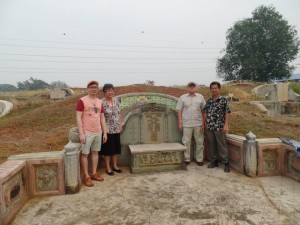
Family photo taken with the tomb-keeper. (L-R): Norman Cho, Elizabeth Cho-Tan, Peter Tan, Tomb-keeper Liow. (photo Norman Cho)
“Moving House”
The Story behind the Painting
by Alvin Ong
The story of 3 affected graves at Bukit Brown not too long ago inspired a revival of family interest; Tan Yong Chuan (Blk 4, Div C), Tan Tiam Tee (Blk 3, Div B), Wee Geok Eng Neo (Blk 4, Div 6) were exhumed in May 2014. Old photos were unearthed from family albums, and heirloom objects from another era suddenly came to light. For the first time in decades, stories and narratives unlocked themselves from these objects and brought new layers of meaning to the notions of home and identity.
Tan Tiam Tee was the son of the magnate Tan Hoon Chiang (buried in Bukit China, Malacca), one of the founders of the Straits Steamship Co. His wife, Wee Geok Eng Neo, and his son, Tan Yong Chuan were all affected by the proposed highway.
(click on images for a bigger view)
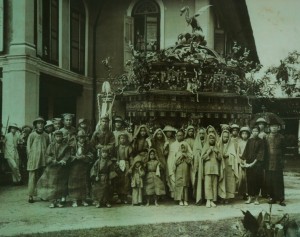
Funeral of Wee Geok Eng Neo, nee Mrs Tan Tiam Tee. Upper Thompson Rd, 1926. (photo courtesy of Alvin Ong)
Funeral of Tan Yong Chuan, died age 29, 26 November 1937, Neil Road. (photo courtesy of Alvin Ong)
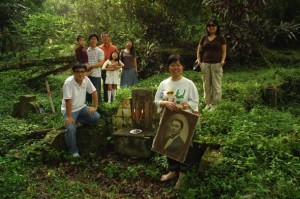
Descendants at the tomb of Tan Tiam Tee, holding his portrait during Cheng Beng -tomb sweeping festival, 2012 (photo courtesy of Alvin Ong)
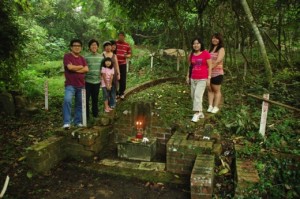
Descendants at the tomb of Tan Yong Chuan, Cheng Beng-tombsweeping festival , 2012 (photo courtesy of Alvin Ong
Miniature cooking pots were interred in Mrs Tan Tiam Tee’s tomb, presumably for her to cook in the afterlife, along with a pearl sanggul, and bracelets. According to my relatives, a set of gold teeth with an engraved heart shape was also found in Tan Yong Chuan’s tomb.
****
Tan Yong Chuan (son of Mr and Mrs Tan Tian Tee) was finally reunited with his wife for the first time in Holy Family Columbarium after 77 years. The columbarium has an unusual regulation that all photos of the deceased must be in color.
No color photographs of the deceased had existed at that time, so with the help of numerous correspondences, scans were digitally emailed, and the photos doctored and hand-painted.
Studying overseas has allowed the artist the space, physically and emotionally, to explore ideas of home and identity. These graves were only re-discovered shortly after the redevelopment plans were announced. The sight of the many abandoned tombs on the artist’s first visit to Bukit Brown had sparked questions about what happened to the descendants of the people who were interred there, which in turn, prompted the artist to explore if there were indeed any family connections to the cemetery at all. Beyond the historical and material significance of the place, it also felt like a site where mystery, the past, and present all came together. Reuniting with the tombs for the first time in many years became an emotional moment for some, and it also made us feel as though we have touched history, an experience that is becoming exceptionally rare in Singapore.
These were ideas that all came together in the painting, which were almost auto-biographical in that they featured vignettes of the artist’s experience with the discovery of the pioneers of Singapore and his roots. One random memory was a trek with Raymond Goh to Seah Eu Chin’s grave; One of the Teochew stone lions guarding the perimeter of the tomb eventually found its way into the picture. Raymond was featured in the early stages of the work, but in the end, this idea of displacement, loss and discovery surfaced in the final version titled, “Moving House”.
This is not the end of the road. There is yet another tomb whose story remains waiting to be told, my maternal great grandfather, Peck Mah Hoe, pictured here. The artist will be heading to the Peck clan temple in attempt to uncover more. And hopefully, there will be more paintings to come.
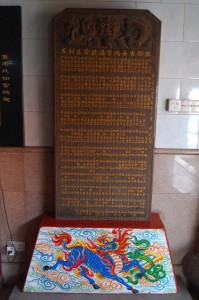
Stele in Peck clan temple with the name “Peck Mah Hoe” at the top, although the character for “Hoe” differs from the one on the tomb. Photo courtesy of Yik Han.
******
About the writer who is an artist :
Alvin Ong is reading fine art in Oxford, and did architecture at the National University of Singapore. In 2004, he was the youngest winner of the UOB painting of the year award at the age of 16. He had his first solo exhibition at 17, in the presence of His Excellency President S R Nathan.
by Ang Yik Han
Born in Kulangsu Island off Amoy, Chua Chwee Oh came to Singapore at the age of 14. He studied till 17 or 18, after which he went into business. Beginning with trading between Singapore and Medan, he founded the firm Hock Heng in 1920 which had branches in Rangoon, Annam and other cities. It dealt mainly in local produce like dried fish and provisions. The biggest segment of his business was in French-controlled Annam, followed by British Malaya and the Dutch Indies. He was the second chairman of the Amoy Association (1940-1941) after its founding, and also a chairman of the Goh Loo Club.
Active in the China Relief Fund’s efforts in raising funds to support the Chinese forces against the Japanese, he was known for donating $100,000 single-handedly under his firm’s name. He also encouraged others to contribute by setting an example when the need arose. It must have been a bitter blow for him during the Japanese Occupation when he was forced to join the Hokkien section of the Overseas Chinese Association (OCA), the umbrella body set up by the Japanese to force the Chinese community to pay war reparations.
Chua Chwee Oh died in 1960 at the age of 64. His first wife Mdm Tan passed away at the young age of 32 and is buried together with him. His second wife was Mdm Ng. The place of origin inscribed on his tombstone is “Si Ming” (思明), another name for Amoy coined by Koxinga when the island was his base of operations against the encroaching Qing forces. This name evokes Koxinga’s longing for the glory days of the Han Chinese Emperors in the Ming Dynasty. Barred from use after the Qing Dynasty consolidated its control over all of China, this place name was revived after the Qing Dynasty was overthrown.
The tomb is at Hill 3, about 10m behind and to the left (facing uphill) of Tan Boo Liat’s tomb.
3rd June 2014
Tomb Measurement 2-Day Workshop with Dr. Lai Chee Kien
NB: There has been a change in starting time for Session one at NLB from 1 pm to 1.15pm.
Places available: :30
Session One : 1.15pm -4pm, Saturday 14 June 2014
Location: Imagination Room, 5th floor, National Library, Victoria Street
Session Two 3.30pm- 6.30pm, Saturday 21 June 2014,
Location: Bukit Brown Cemetery Gate (meeting point)
1) Description:
From 2011-2013, several architecture students supervised Dr Lai Chee Kien have measured tombs at the former Bukit Brown Municipal Cemetery as an attempt to record the historical and unique types and hybrids found in the cemetery, now under threat of road development. This workshop aims to share the basics of measuring objects and buildings, but with a focus on the experiences of measuring tombs at Bukit Brown. It is hoped that design students and members of the public can learn the basics of tomb measurement, and in future volunteer to record other significant tombs, or those of deceased relatives. These will serve as archival records in the future for all.
2) Scope
14 June 2014 (Theory session)
(a) Introduction to measuring objects and buildings
(b) Methods, tools, and practices
(c) Tomb types and features
(d) Inhouse practice session
21 June 2014 (Practical session at Bukit Brown)
(e) Introduction to Bukit Brown
(f) Groupwork: measuring a small tomb
3. Things to bring (theory session)
(a) A4 clipboard
(b) Measuring tape (5m or more)
(c) Pen or pencil (paper will be provided)
[Items for practical will be discussed at theory session]
4. Pre-requisites
(a) Participants who have attended guided tours of Bukit Brown cemetery would be appreciated.
(b) Participants who have prior 3D drawing knowledge (architects, designers, architectural and design students) would have an advantage.
(c) Participants are required to attend both the theory and practical sessions.
Disclaimer: By agreeing to participate in the practical session held at Bukit Brown Cemetery, I understand and accept that I must be physically fit and able to do so. To the extent permissible by law, I agree to assume any and all risk of injury or bodily harm to myself.
To register, please email latest Wednesday 11 June’2014 to : a.t.bukitbrown@gmail.com
with Subject; Registration for Tomb Measurement Workshop.Participants to indicate name, IC, contact number, email and relevant interest/experience as stated in 4 (a) and (b). Successful applicants will be informed by email.
About Dr. Lai Chee Kien:
Dr Lai is a registered architect, and graduated from the National University of Singapore with an M Arch. by research [1996], and then a PhD in History of Architecture & Urban Design from the University of California, Berkeley [2005]. He researches on histories of art, architecture, settlements, urbanism and landscapes in Southeast Asia
 Dr. Lai Chee Kien of the documentation team (photo: Claire Leow)
Dr. Lai Chee Kien of the documentation team (photo: Claire Leow)
Tan Ean Teck (1902-1944)
According to “Biographies of Famous Personalities in the Nanyang,” Tan Ean Teck came to Singapore from Tong Ann, China at the age of 16. He worked for about four years in his brother’s (Tan Ean Kiam) company before striking out on his own, setting up his own rubber trading firm.
He was a strong supporter of the anti-Japanese war effort in China, and contributed to charitable causes in both China and other lands. He also contributed to the Hokkien Huay Kuan, the Chinese Chamber of Commerce, the Tong Ann District Guild, as well as many schools and social institutions,
But Tan Ean Teck’s life was tragically gunned down when he became a casualty of WW 2. On 19 April, 1944, the MPAJA (Malayan People’s Anti-Japanese Army) ambushed officials of the OCA ( Overseas Chinese Association) en route to visit the Chinese settlement of Endau in Johor.
A member of the OCA convoy, captures vividly what happened:
Tan Ean Teck’s body was taken back to Singapore and 4 days later on 23ed April , he was buried in Bukit Brown, close to his brother Tan Ean Kiam. He was 42 years old.
Prologue: Endau and World War II
In August 1943, in order to ease the food shortage problem in Singapore, the Japanese authorities mooted the idea of setting up new settlements outside Singapore and encouraging Singaporeans to relocate to these settlements to cultivate the land there. These settlements were planned to become self-sufficient in food supply. A settlement was created for Chinese settlers at Endau in Johore. (Source: Iinfopedia)
From Alex Tan Tiong Hee
My understanding, based on my late father’s (Tan Yeok Seong) account:
The OCA was not popular with the anti-Japanese elements that went underground to survive. Those living an open unconcealed life in public were natural targets for the Kempeitai who sought revenge against the Chinese, hence the pogrom.
The pacification of Japanese antagonism was the OCA’s raison d’etre and which had to be traded by the raising of $50million from the Chinese community as a gift for the Japanese emperor’s approaching birthday. This being done, the persecution or ‘sook ching’ then ended.
The communist terrorists were enterprising enough to merge with the anti-Japanese underground group to form the MPAJA. They accused the OCA as collaborators and monitored the Endau Project. Their opportunity came when they ambushed and fired at a convoy killing all except Lee Choon Seng who was Vice President of the OCA.
Extract from Collaboration during the Japanese Occupation : Issues and Problems focusing on the Chinese Community by Han Ming Guang (Hons thesis for history):
Even though Endau was administered by the Chinese, the fact that it was sponsored by the Japanese military and established by the O.C.A whom the MPAJA saw as an organisation of collaborators, meant that the Chinese administrators that administered the settlement were now targets for the MPAJA guerrillas. The MPAJA guerrillas ambushed the O.C.A officials that were on their way to visit Endau and in the process wounded Mr Lee Choon Seng, the chairman of the Overseas Banking Corporation. They also managed to kill Mr Wong Tatt Seng, who was in-charge of maintaining peace and order within the settlement, along with other Chinese administrators who were also living in Endau at the time of the attacks.
While it was clear that the MPAJA viewed the members of the O.C.A as well as the Chinese leaders of Endau as collaborators and traitors, in general the people who were living in Endau did not share those views. They understood that the Endau plan was conceived by the O.C.A and Mamoru Shinozaki in order to save Chinese lives from the dreaded Kempeitai , by giving the Chinese community a piece of land in Johore, for them to live separately and free from the Japanese military.
Pat Lin on life in Endau:
According to my parents, Maggie Lim and Lim Hong Bee (H.B. Lim) both of whom were actively involved with the MPAJA in the Endau settlement (Yes, I was there too) there were people in the OCA who were what we may today call double agents. They included some very prominent local people who on the surface professed to be anti-Japanese, but who were informers who were usually rewarded by the Japanese.
As with the French resistance, it was a very difficult time as people all lived under a climate of uncertainty as to who was about to betray them to the Japanese. My mother also had her suspicions as to those who carried out the covert assassination of informers.
She has a vivid story of having to deal with someone who was brought into the Endau clinic (she was the Endau doctor) one evening with a bullet in his head. As a physician she was duty bound to do everything to save him. She was filled with the reluctance to do anything as it was known by the Endau leadership that he fed information to the Japanese that led to people being taken away for execution or disappearing suddenly. Possession of any sort of weapons was punishable by death, but people like my father possessed hand guns that they somehow received from some source and were very carefully hidden.
Endau was located in healthier environs and there were more people who managed to make a go of farming. The staples were kangkong and ubi kayu. My little family brought chickens up from Singapore piled up In chicken coops on top of a lorry. Some of them ran off into the jungle, and others fell prey to wild animals. Wild animals including roaming tigers were a real threat.
The first year in Endau and Bahau were particularly bad before the first harvests. OCA members from Singapore would make periodic visits with whatever they could scrounge up including medicines. Some within the community tried being entrepreneurial by trying to sell black market food stuffs they somehow managed to obtain. Mom recalled being so hungry from having to work and nurse me but my father being ever the man of high ethical standards refused to allow the purchasing of black market goods.
An Epilogue on a Life Miraculously Saved
The metal badge of the OSA worn on the chest, deflected the bullet that could have fatally wounded the Vice President of the OSA, Lee Choon Seng. He believed he was saved for a reason and his life took on a spiritual quest in the aftermath of war. Lee Choon Seng subsequently founded the Poh Ern Shih to dedicate merits to people killed during the occupation. His grandson transfromed the monastery into Singapore’s first green temple.
***********
Editor’s Acknowledgement : This blog post is a compilation of first hand accounts and research from the Heritage Singapore Bukit Brown Facebook Community.
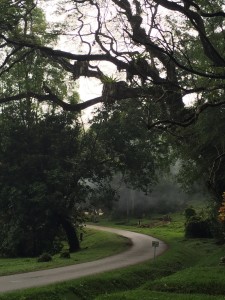
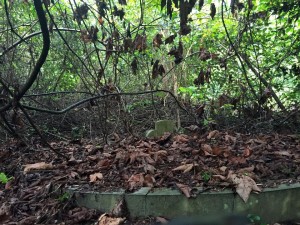
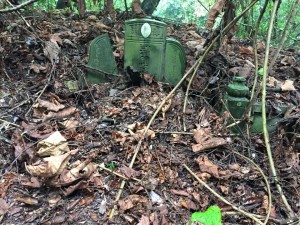
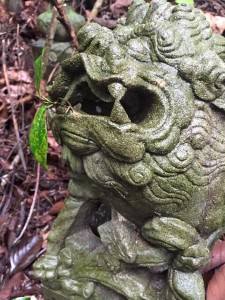

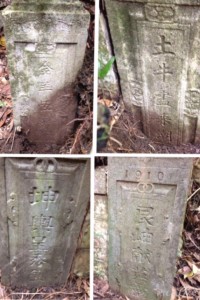
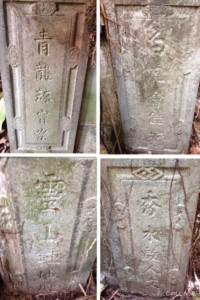
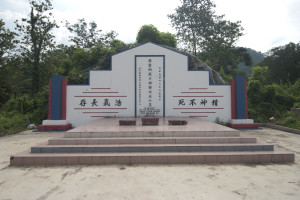
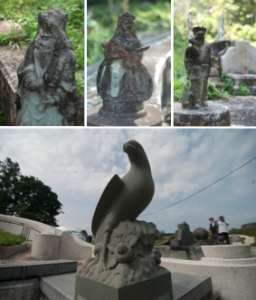

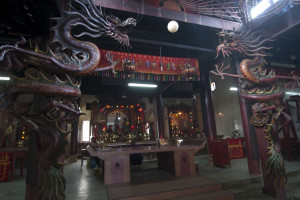
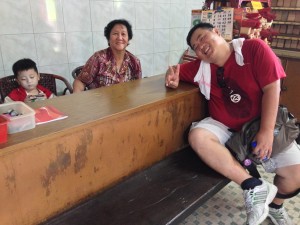
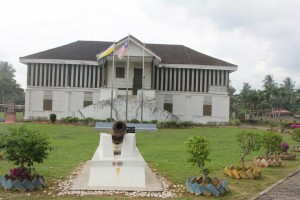
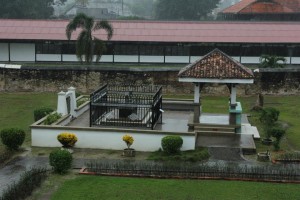
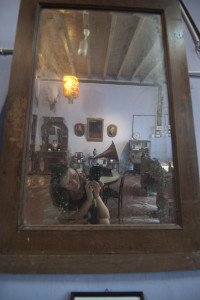
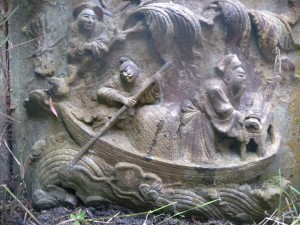
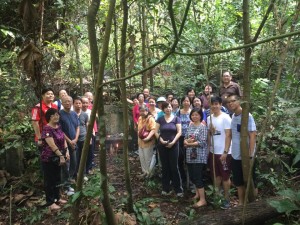
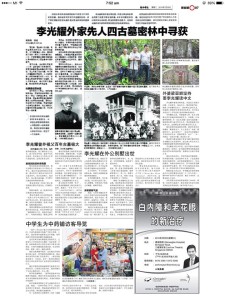
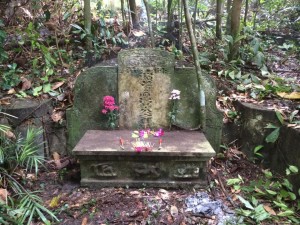
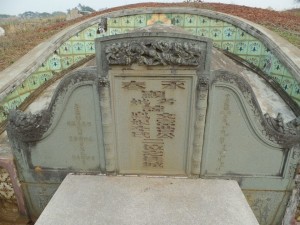
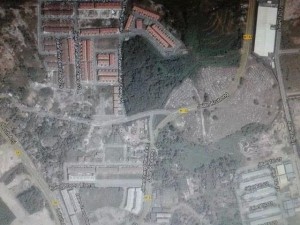
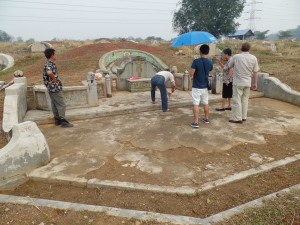
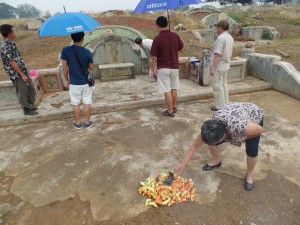
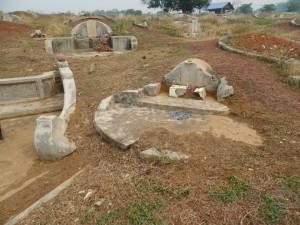
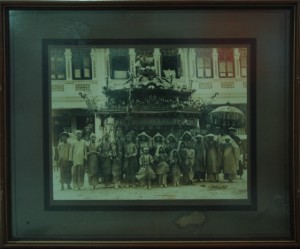
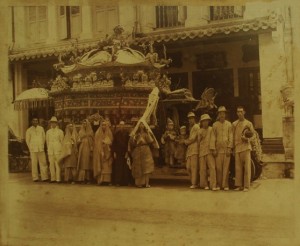
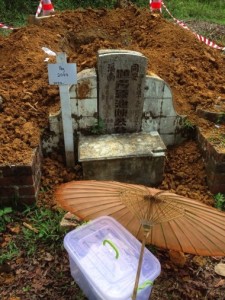
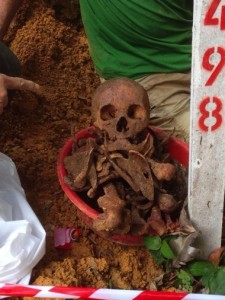
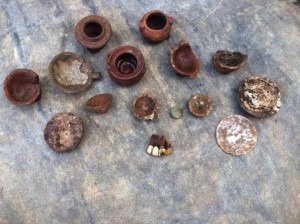
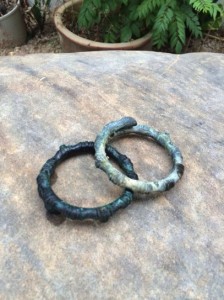
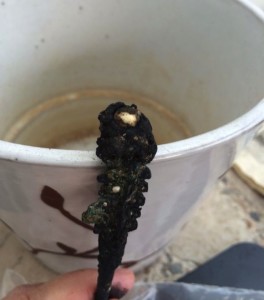
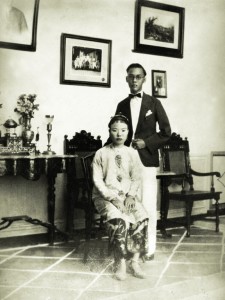
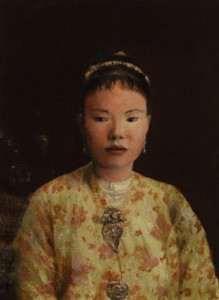
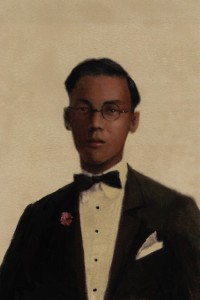
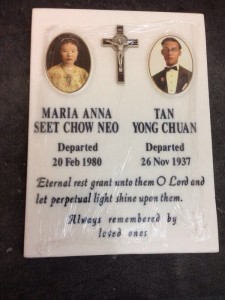
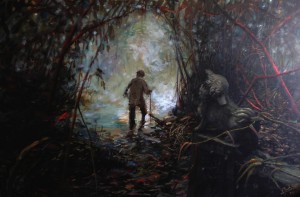
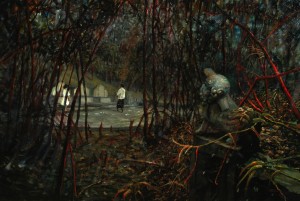
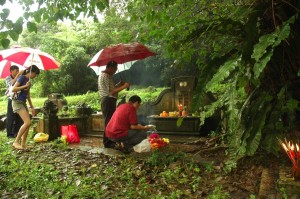
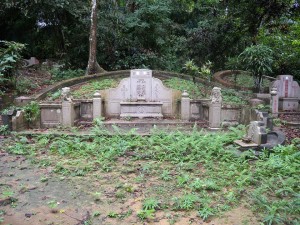
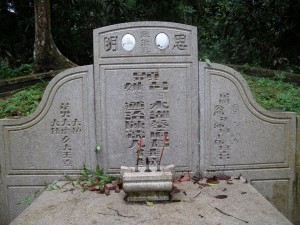
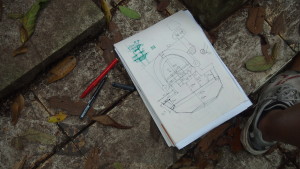
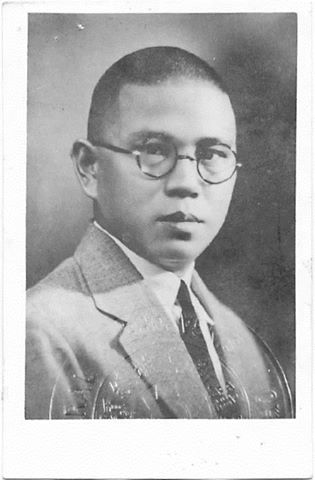
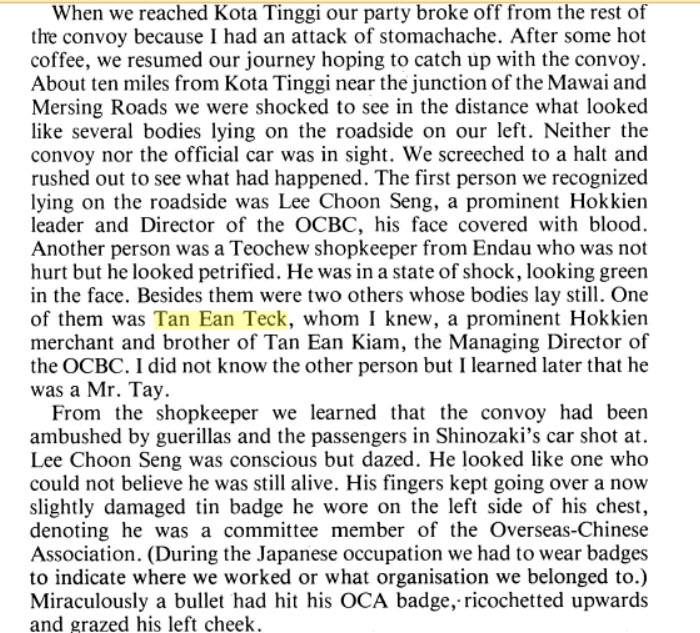
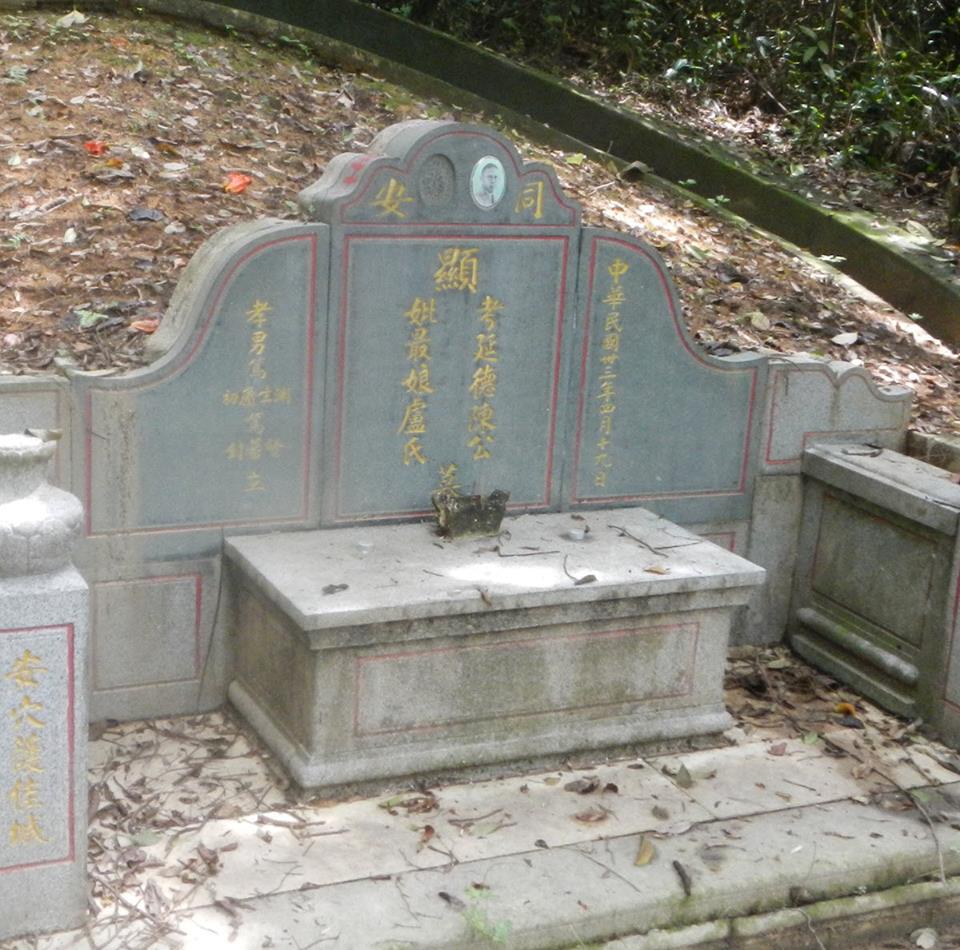
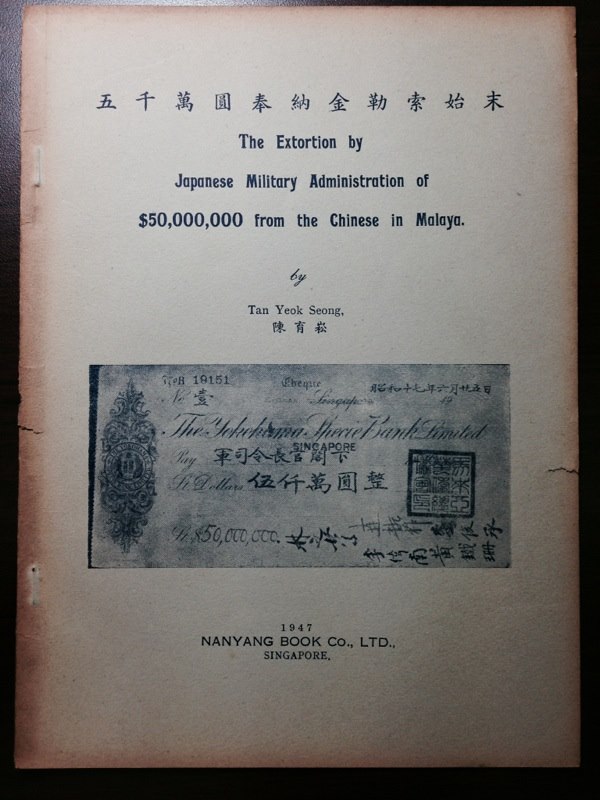
Recent Comments